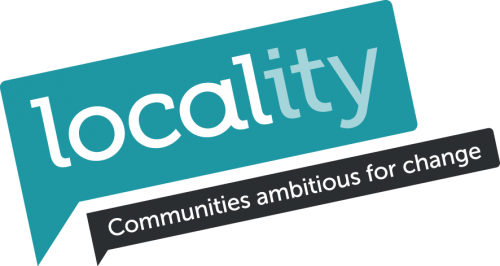Neighbourhood planning support is available from:
- The Campaign to Protect Rural England (CPRE)
- The Centre for Sustainable Energy (CSE)
- Local Insight and Natural Neighbourhoods
- Locality: The Building Community Consortium
- Neighbourhood Planning Grants and Support
- The Prince’s Foundation for the Building Community BIMBY Guide
- RTPI - Planning Aid
- Tesco Green Space Grant
Last updated: 23rd May 2016
1. The Campaign to Protect Rural England
 The following links are provided to signpost to the support available.
The following links are provided to signpost to the support available.
(a) The CPRE Planning Help (External website) is "an easy to use website about planning. It will:
- Show you how to respond to planning applications
- Guide you through the planning maze
- Explain planning jargon
- Help you get involved in planning decisions that shape where you live" (CPRE)
(b) Also see CPRE: ‘How to respond to planning applications: an 8-step guide’ (External website)
2. The Centre for Sustainable Energy (CSE)
The Centre for Sustainable Energy (CSE) has produced a 32-page guidance note designed to help community groups identify suitable areas for onshore wind development in their Neighbourhood Plan.
This is in response to a change in the planning regime that came into effect in June 2015 which gives local people the final say on planning applications for wind turbines. The new national guidance advises that in order for onshore wind proposals to get planning permission:
- The development site must be in an area identified as suitable for wind energy development in a Local or Neighbourhood Plan
- Following consultation it can be demonstrated that the planning impacts identified by affected local communities have been fully addressed and therefore the proposal has their backing.
The guidance note is available at: CSE Wind Energy Guidance Note
3. Local Insight and Natural Neighbourhoods
Two recently launched tools that can help neighbourhood plan groups develop a robust evidence base on local issues. The first, Natural Neighbourhoods, hosted by the Local Government Association, and developed by Porism, allows the user to define a neighbourhood plan area and get data reports specifically for that area, rather than the larger geographical areas that data is typically collected for.
The second, Local Insight , developed by HACT and OCSI is a community mapping and reporting tool that groups can use to get up-to-date open data and analysis matched to the areas that are relevant to them.
4. Locality: The Building Community Consortium
Locality have recently launched two new toolkits to help communities plan their local area:
-
Neighbourhood Development Orders (including Community Right to Build Orders) Over the past few years we have seen many neighbourhood plans come through, but fewer groups have pursued Community Right to Build Orders (CRtBOs) and Neighbourhood Development Orders (NDOs). NDOs grant planning permission for specific development in a particular area. This could include things like specified changes of use, certain kinds of alteration or the reinstatement of historical features. An NDO could be used to grant outline planning permission for specified uses on allocated sites, such as housing, commercial uses or recreational uses. CRtBOs are a kind of NDO which can grant planning permission for small-scale community-led developments. This toolkit provides guidance on the use of NDOs and CRtBOs. It sets out the reasons why these orders should be considered, their possible uses, the process involved and good practice. The Guide has been prepared for Locality by Urban Vision Enterprise CIC, a social enterprise specialising in planning and regeneration. Access the toolkit here.
-
Design in Neighbourhood Planning: This toolkit, written by the Design Council & Cabe on behalf of Locality, highlights some tools and activities that neighbourhood plan groups can use to assess the qualities and character of their neighbourhood plan area, helping to develop design policies. The data collected using these tools will help groups to clearly articulate design principles which will ensure that future development reflects local identity, helps create a sense of pride and works well for people’s needs. The toolkit also highlights some best practice examples of design. Access the tookit here.
5. Neighbourhood Planning Grants and Support
The Department for Communities and Local Government has made funding available to provide support and grants and you can apply now via the My Community website (see more at: Locality Funding).
-
All groups writing a neighbourhood plan or neighbourhood development order will be eligible to apply for up to £9,000 in grants
-
Groups facing more complex issues can apply for specific packages of technical support where needed, and may also be eligible for further £6,000 in grant.
Groups with complex issues include:
-
Neighbourhood forums (where there is no Parish or Town Council)
-
Clusters of parishes
-
High growth areas
-
Deprived areas
-
Business led neighbourhood plans
-
Populations of over 25,000
-
Groups preparing a neighbourhood development order.
Some ideas of what you might apply to use grant for include:
-
Developing a website
-
Training sessions for members of the steering group
-
Help with putting together a project plan
-
Undertaking a household survey
-
Help with developing the evidence base
-
Engaging a planning expert
-
Venue hire, publicity materials, printing and other costs associated with consultation.
Criteria for fund applications:
-
You can only apply for funds that you can spend within 6 months or before the end of the current financial year, whichever is the earliest.
-
You can only apply for between £1000 and £9,000. If your application is not within this range it will be automatically rejected.
-
You cannot apply retrospectively for work that has already taken place.
-
You cannot apply for the cost of staff or volunteer’s time, except for specialist consultants.
6. The Prince’s Foundation for Building Community BIMBY Guide
Prince’s Foundation for Building Community provides a unique online tool to shape new developments so that they are well designed and well received by communities. The BIMBY (Beauty-In-My-Back-Yard) supports people on the ground to inform planners and developers what they would like new housing to look like.
The toolkit is an easy to use website which guides groups through a series of 3 workshops to create their own unique housing manual. A BIMBY manual formalises what the community thinks is Beauty In My Back Yard in a format that developers and planners will understand and can be used as a part of the neighbourhood plan evidence base.
Please visit the BIMBY website for further information
7. RTPI - Planning Aid

The Royal Town Planning Institute (RPTI) Planning Aid website "provides free, independent and professional planning advice to communities and individuals who cannot afford to pay professional fees." (RTPI). They have produced a factsheet detailing what support they can offer. The factsheet is available here.
Click here to visit the RTPI Planning Aid website (external site) or telephone them on 0203 206 1880.
8. Tesco Green Space Grant
Does your neighbourhood plan have green space allocations? The Tesco Bags of Help Grants Programme which is for local projects to improve green spaces in communities could potentially help with implementation.
